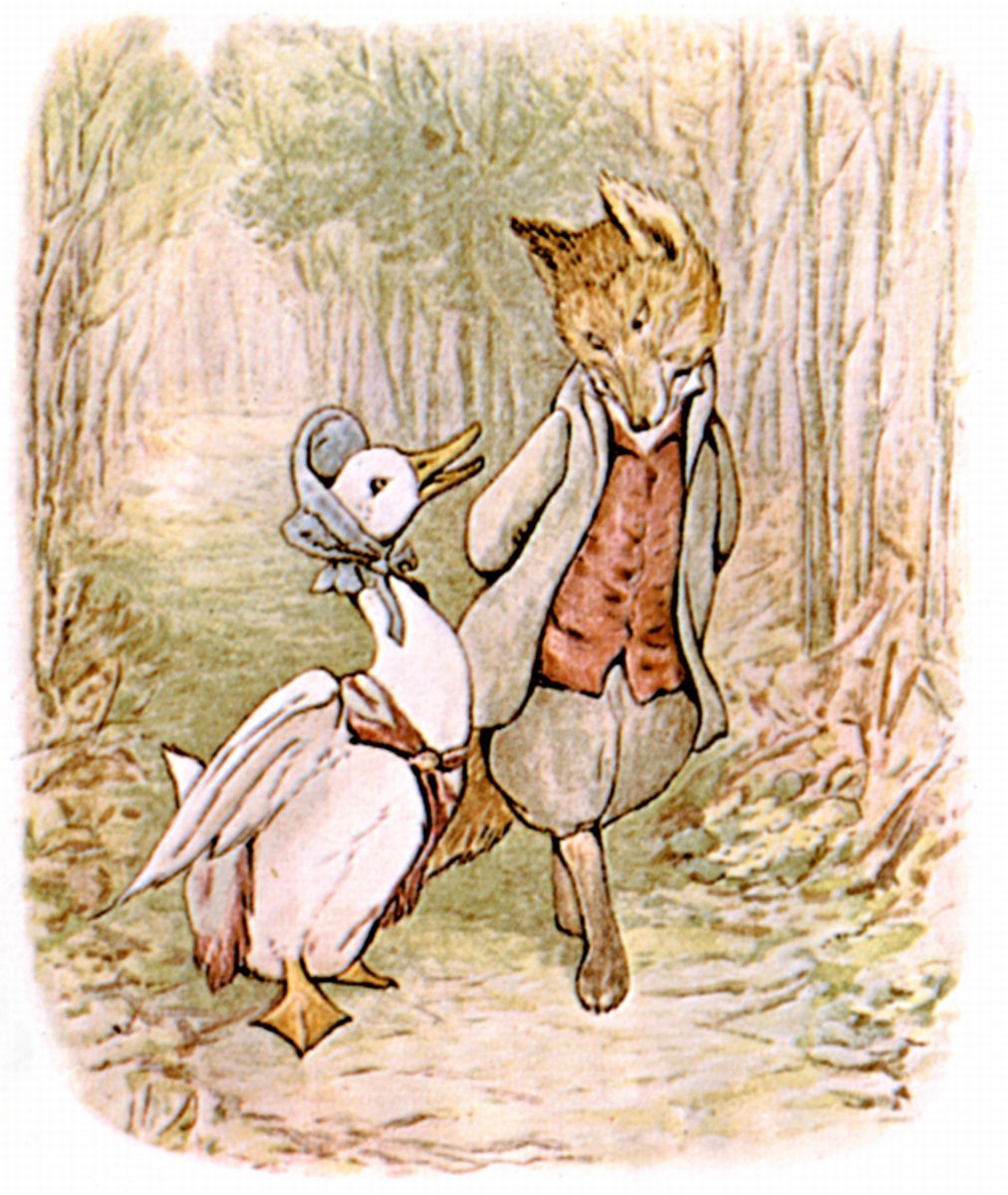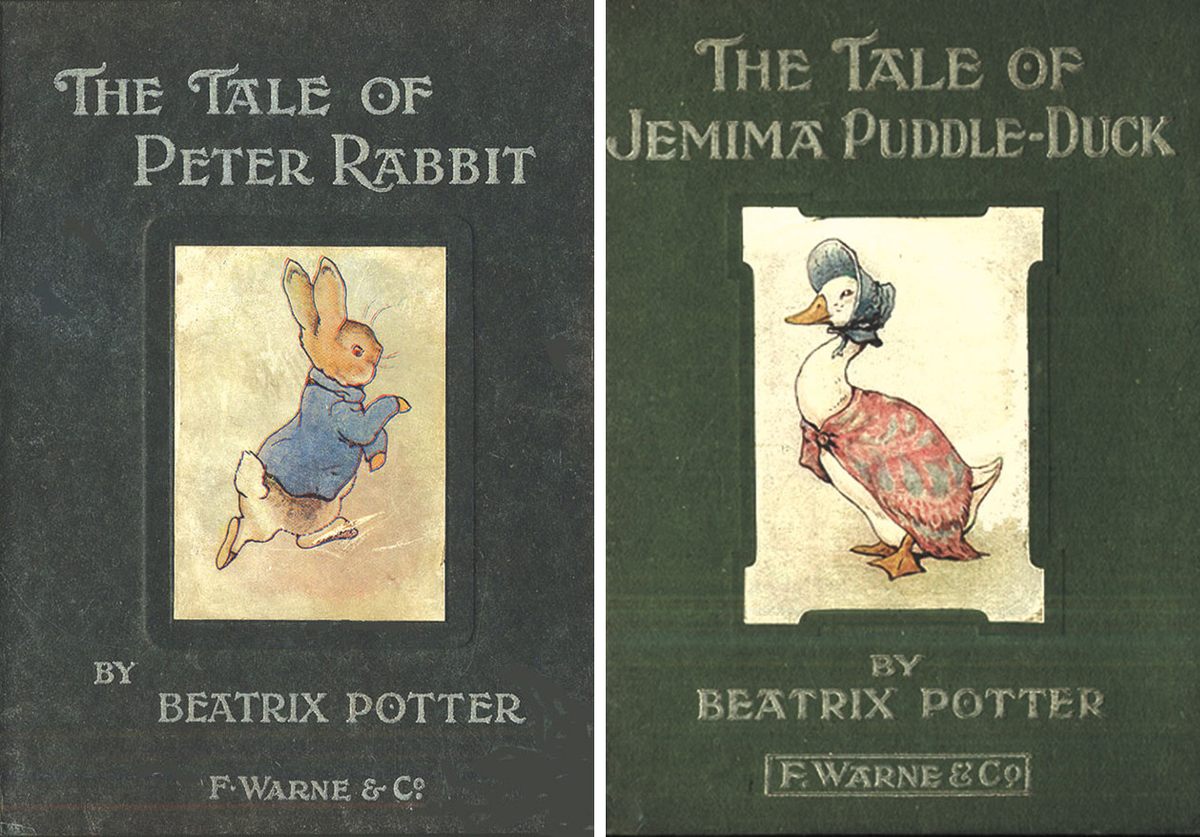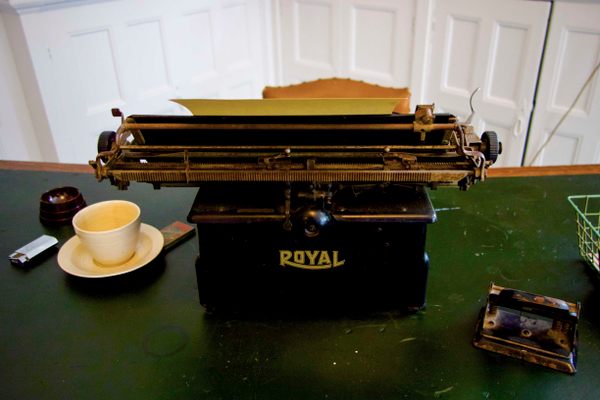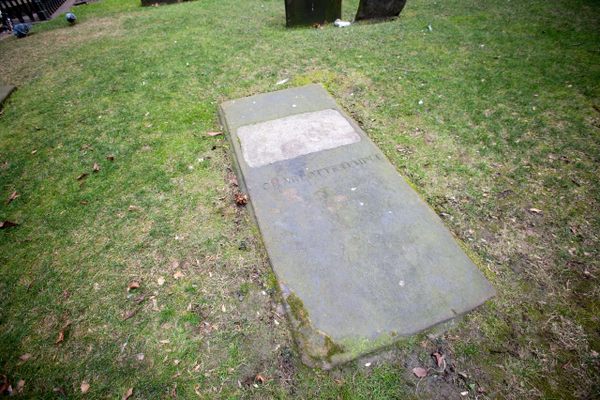Beatrix Potter’s Greatest Work Was a Secret, Coded Journal She Kept as a Teen
It took a dedicated superfan 13 years to translate it.
In November of 1943, Beatrix Potter wrote a letter to her beloved cousin, Caroline Clark. Seventy-seven years old, laid up in bed with pneumonia and heart disease, Potter was doubtlessly thinking back on her long and varied career: her hundreds of landscape watercolors, her respected mycology research, and her 24 children’s books, some of which, like The Tale of Peter Rabbit and The Tale of Two Bad Mice, were already considered classics.
In the letter, though, she didn’t mention any of these. Instead, she reminisced about a very different project—longer, bolder, and entirely secret. “When I was young I already had the itch to write, without having any material to write about,” she explained to Clark. “I used to write long-winded descriptions, hymns (!) and records of conversations in a kind of cipher shorthand.”
Five weeks later, Potter died. As far as we know, this is the only time she ever mentioned what may well be her masterwork: a private journal, written in secret code, that she kept for over fifteen years. In it, she wrote her innermost thoughts—about art and literature, science and nature, politics and society, and her own hopes and frustrations. Its eventual publication transformed her reputation, from “brilliant children’s book author” to “writer for the ages.” If it weren’t for one tireless, dedicated fan, we might never have seen it at all.
Potter began keeping her journal when she was about 14 years old, “apparently inspired by a united admiration of [James] Boswell and [Samuel] Pepys,” as she later wrote to Clark. While those two luminaries were adult men when they started their diaries—Boswell a 22-year-old city playboy, and Pepys an up-and-coming civil servant—Potter, as a young woman in a Victorian household, was writing from a different life stage and station.
Her mother, Helen, herself constrained by social circumstances, wanted a quiet, obedient daughter—one that, when she grew older, would stay home and look after her parents. This was not a role that came naturally to Beatrix, who was adventurous, opinionated, even mischievous—the Peter Rabbit to her mother’s Mr. McGregor.
The journal was a place where Potter was free. She could escape: She wrote of her efforts to memorize Shakespeare (“there is a vast amount in my head”), and related interesting facts she had picked up about the rest of the world (“Manner of catching ducks in Egypt: Man swims in the water with his head inside a hollow pumpkin and surrounded by decoy ducks, and pulls wild ones under.”)
She could participate: Her entries are full of references to political events and transcripts of adult conversations. She could critique: “I say fearlessly that the Michelangelo is hideous and badly drawn,” she wrote after a visit to the National Gallery. “No one will read this.”

“It fulfilled a need not only to express herself, but to have something over which she, who was powerless in every other way, exercised absolute control,” writes Linda Lear in her 2008 biography, Beatrix Potter: A Life in Nature. She also presents a simpler theory: “It seems reasonable to conclude that her code writing was at least initially devised against the possibility that her mother might read it.”
She may have originally imagined this unwanted audience of one. Decades later, though—after her bestselling books had brought her fame and fortune—she was keenly aware that people besides her mother would now be interested in her private thoughts. Before she died in 1943, she and her husband, the lawyer William Heelis, bequeathed their entire 4,000-acre estate to Britain’s National Trust, along with her original illustrations. She failed to tell anyone about the diaries, though, or to provide for their translation. “[They were] exasperating and absurd compositions,” she wrote in the letter to Clark. “I am now unable to read [them] even with a magnifying glass.”
So when Stephanie Duke, a younger relation of Potter’s, came across what she described as “a large bundle of loose sheets and exercise books written in cipher-writing” in the late author’s home in 1952, she wasn’t quite sure what to make of them herself. She did know who to ask for help, though—Leslie Linder, the biggest Potter fan around.

Linder grew up on a country estate on the outskirts of London,* in the type of landscape that inspired much of Potter’s work. Like most Potter aficionados, he got his first taste of the author’s books at the tender age of seven, when he was given early copies of several of her books, including The Tale of Peter Rabbit. His father, though, gave them away. It took decades before he rediscovered Potter, at age 40, and fell in love with her work all over again. Along with his sister, Enid, and with the help of his family’s vast personal fortune, he began buying up Potter’s work at estate sales and auctions.
“The love of Potter’s work triggered the desire to know more about the lady who created it,” says Andrew Wiltshire, an acquaintance of Linder’s and the author of a biography of him, Beatrix Potter’s Secret Code-Breaker. The Linders began collecting other Potter ephemera—not just artworks, but letters, drafts, and other ephemera. When Duke approached Leslie about the sheaf of inscrutable papers, he jumped at the chance to take a look. “He was the kind of man who would say ‘Yes please!’” Wiltshire says. “He wouldn’t need to be asked twice.”
As codes go, Potter’s wasn’t inordinately complicated. As Wiltshire explains, it was a “mono-alphabetic substitution cipher code,” in which each letter of the alphabet was replaced by a symbol—the kind of thing they teach you in Cub Scouts. The real trouble was Potter’s own fluency with it. She quickly learned to write the code so fast that each sheet looked, even to Linder’s trained eye, like a maze of scribbles.

Her handwriting could be minuscule—at times there were thousands of words squeezed onto a single page. It didn’t help that, when she turned 20, she destroyed much of her earliest—and likely clearest—work, writing by way of explanation that “it is rather appalling to find one was such a goose only three years since.”
She also prioritized production over organization, in that way that is common among children and artists (of which Potter was, of course, both). She didn’t confine herself to notebooks. She wrote all over anything she had at hand. In one case, she repurposed an entire French dictation textbook; she ripped out the pages and pasted in her own coded reviews of museum exhibitions.
She even availed herself of a prescient shorthand: “Occasionally [numbers] were used as parts of words, such as ‘4get’ or ‘2gether’,” Linder later wrote.

It was a tough task. For five years, Linder pulled out his pile of pages, looked over them, and filed them away again with a sigh. “By Easter 1958, I was beginning to think somewhat sadly that these code-written sheets would remain a mystery for ever,” he remembered later. That Monday, April 7, he decided to give himself a final crack at them. He pulled a sheet at random from his stack. There, near the bottom of the page, was something decipherable at last: the Roman numerals XVI, and the year 1793.
To which sixteenth person had something happened in 1793? He fruitlessly flipped through a Dictionary of Dates. He then turned to a more appropriate ally, a children’s encyclopedia, which told him: “Louis XVI, French King; born Versailles 1754; guillotined Paris 1793.” “Here at last was a possible clue!” he wrote.

Louis XVI’s presence helped him puzzle out a nearby word: “execution.” He then knew the symbols for eight letters of the alphabet, including four vowels. He pulled out an earlier sheet, written in a relatively clear hand, and the rest of the day passed in a rush of small revelations. “By midnight on that memorable Easter Monday practically the whole of Beatrix Potter’s code-alphabet had been solved,” he wrote.
The real labor, though, had just begun. “Working out the shapes of her words using the alphabet … took [Linder] four years,” says Wiltshire. Linder was careful to get Potter’s thoughts and observations exactly right. If she wrote of a plant she had seen, he checked with a local botanist. When she described journeying to a particular place, he traced the route on a map, and occasionally traveled there himself. Any mention of a work of art sent him running to an old exhibition catalog.

Had Linder not enjoyed a very particular lifestyle—all other labor optional, a house run by a team of full-time servants—he would have never have been able to do it, Wiltshire says: “He had the time to just look at the pages, and wonder, ‘What on earth does this scribble mean?’”
As he carefully worked through the translation, page by page and year by year, Linder was conscious of his status as the first person to have ever seen the thoughts recorded there. “It appears that even her closest friends knew nothing of this code-writing,” he wrote. “She never spoke of it.” In this private space, he grew to appreciate his favorite artist as an individual. “It was strange how one forgot about Beatrix Potter the author of the Peter Rabbit books,” he wrote, “and became conscious of a charming person called Miss Potter.”
Of course, those two people were one and the same. Potter’s diary is full of hints at her future as an artist and writer. “I can’t settle to anything but my painting, I lost my patience over everything else,” she wrote at the end of one particularly agitated page. Plenty of entries close with the name of a book she had recently finished, or contain one of her signature, detailed, occasionally brutal art reviews.
Later, she and her brother, Walter Bertram, started designing and selling Christmas cards, decorated with illustrations of their pet rabbit, “that charming rascal Benjamin Bouncer.” “What an investment that rabbit has been in spite of the hutches,” she wrote, after a particularly lucrative sale.

There are also plenty of excited accounts of the natural world—descriptions of long walks, succinct weather reports, and tales of animals she knew and loved. Beatrix and Walter Bertram were constantly filling their home with wild friends. Besides Benjamin, the journal pays close attention to “Prince the chestnut horse,” a pair of lizards named Toby and Judy, and a green frog, Punch, who “has been on extensive journeys.”
“I think she was in many respects the sweetest animal I ever knew,” Potter wrote in 1886 after the death of one mouse, whom she referred to as both “Miss Mouse” and “Xarifa.” The late pet showed up many times in Potter’s sketches, and there is a character called “Xarifa” in The Fairy Caravan, published a full 43 years after its namesake’s death
As she grew older, Potter began to think about sharing her written insights with more people. On August 31, 1894, she journaled for the first time about searching for mushrooms—a pursuit that would grow to occupy more and more of her time over the next few years, as she grew increasingly interested in mushroom reproduction. “Beatrix Potter’s Journal ended on the 31st January, 1897, when at the age of thirty she was about to submit a Paper to the Linnaean Society of London,” Linder later wrote.

Although she eventually withdrew that particular paper, after realizing some of her samples were contaminated, she never returned to her code. After fifteen years and thousands of pages written in secret, she was ready to communicate in a way that others could understand.
All told, it took Linder 13 years to decode Potter’s journals. In 1966, they were published by Frederick Warne Ltd. as The Journal of Beatrix Potter. Up to that point, critics had mostly considered Potter “a writer of bunny rabbit tales” and not much else, says Wiltshire. The journal showed that she was much more—an inquisitive spirit with a sense of humor and a great gift for language, and a keen observer of Victorian life.
Linder kept collecting and thinking about Potter for the remainder of his life. By the time of his death, in 1973, he had filled two room-sized safes in his house with Potter art, papers, and ephemera. He left it all to the Victoria & Albert Museum, where it lives on as the Linder Bequest, Archive and Collection. The consensus among experts is that, were it not for Linder’s work, Potter would be much less well known today, says Wiltshire: “Since 1966 over 100 books have been written about Beatrix, and they’ve all either drawn on information from the archive, the Journal, or the other two books, about Beatrix, that Leslie and Enid wrote in 1955 and 1970.”
“If he hadn’t spent all this time [translating], those pages would have remained in a cupboard, forgotten,” says Wiltshire. And if she hadn’t spent even longer writing it, we would have missed out on a great gift from this “writer of bunny rabbit tales”—thousands of pages of very human thought.
*Correction: This post previously stated that Leslie Linder grew up in Cumbria’s Lake District—it was instead a different part of the English countryside.




















Follow us on Twitter to get the latest on the world's hidden wonders.
Like us on Facebook to get the latest on the world's hidden wonders.
Follow us on Twitter Like us on Facebook